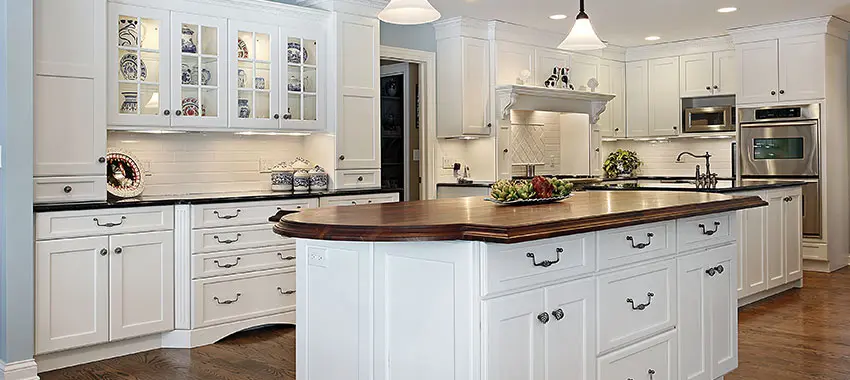Oct
How Do I Calculate How Much Granite Countertops I Need?
How do I calculate how much granite I need? Is a common question you will hear from homeowners looking to install granite countertops for the first time.
Granite is sold in square footage so what you need to do to determine the amount of granite you need is to find out the overall square footage of your countertop area.
How do you do this? Here is a guide on how to go about it:
How to calculate the amount of granite you need
- Measure the length of your countertops along the wall, taking the measurements in inches. The measurements should include the one-inch overhang for any countertop edge that isn’t against the wall.
If the counter is broken up into sections due to the presence of an oven or sink, subtract the occupied space from the overall length.
Measure the width of the countertop beginning from the wall, extending outward to the front of the countertop.
Multiply the length of the countertop by the countertop width. The resulting number is the area of the countertop in square inches.
2. Measure the height of your backsplashes. The measurement should reach from the countertop surfaces to the top of the backsplash.
Multiply the length of the countertop to the height of the backsplash to get the area of your backsplash.
Add the area of the backsplash to the area of the countertop, and the resulting number is the total amount of granite you need expressed in square inches.
3. Finally, convert these results to square feet. To do this, divide the number of square inches by 144.
If this is your first time buying the countertops, you should know that granite comes in slabs, and chances are your measurements won’t exactly match the available sizes of your granite slab.
The good thing is most countertop sellers will only charge you for the section of the slab you use.
What should you look for when buying a granite slab?
Thickness
You want a thick countertop that won’t break when you install it. Avoid the popular ¾ inch countertops as they are fragile and often require laminate edges and supports. While they are affordable to install, they don’t last long enough, and you have to replace them more often.
For best results, buy 1-inch countertops. While they will be more expensive to buy, they will give you a long service making them affordable in the long run.
Cracks and natural pits
Most hairline cracks and pits are natural and add natural beauty to your countertops, and you have nothing to worry about when you see them. Unfortunately, sometimes the cracks are too deep, which compromises the integrity of the countertops, especially if your countertops are less than 1 inch thick.
At the time of purchase, carefully go through the countertops, and if you notice an imperfection, ask the stone seller or fabricator how it affects the stone and how it can cause harm.
Seams
If you have the money, opt for seamless granite slabs as they tend to look better. While the seamed countertops look good at the time of purchase, it’s not the case five or ten years down the line.
Edges
To have an easy time installing the countertops, get a custom-designed edge that will fit your cabinet detail. Most fabricators won’t customize the edges, so you need to visit different stores and ask them whether they are willing to customize them for you.
If, on the other hand, the standard edges are okay with you, go with bevel edges.
Installing the countertops
After buying the countertops, the next step should be to install them. If you have the skills, you can install the countertops by yourself, but for best results, let experienced, and certified granite installers Rockville handle it.
You should note you have to seal the countertops at the time of installation to prevent them from staining and getting damaged. For best results, use a high-quality sealer. Most manufacturers tend to seal their countertops, and you don’t want to waste money resealing them.
Before installing the countertops, first test whether they are properly sealed. You do this by pouring water on the slabs. If the area darkens, you need to seal the surfaces.


